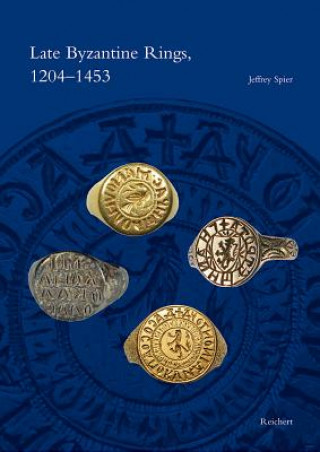
Livrare
Consilier de cumpărături





Nu se pretează? Nu contează! La noi puteți returna bunurile în 30 de zile
 Voucher cadou
orice valoare
Voucher cadou
orice valoare
Cu un voucher cadou nu veți da greș. În schimbul voucherului, destinatarul își poate alege orice din oferta noastră.
Late Byzantine Rings, 1204 - 1453
 engleză
engleză
 232 b
232 b
30 de zile pentru retur bunuri
Ar putea de asemenea, să te intereseze


Late Byzantine Rings, 1204-1453 is the first study of the rings of the final years of the Byzantine Empire, the period encompassing the Latin occupation of Constantinople (1204-1261) and the restored empire under the Palaiologan rulers until the fall of Byzantium to the Turks in 1453. The rings from this period are remarkable not only for their fine design but also for the variety of inscriptions they bear, including personal names and monograms, official titles, and epigrams composed by Byzantine poets. §The book illustrates and discusses nearly fifty rings from the Palaiologan period, as well as some earlier Byzantine rings, contemporary Byzantine jewelry, and related material from Bulgaria, Serbia, and the West. Many of the rings are published here for the first time. The study begins with a review of the great diversity of rings that existed at the end of the twelfth century, just before the Latin Conquest, and suggests that in view of the occupation of both Constantinople and Thessalonica, the production of rings and jewelry in Byzantine style was disrupted. When the Byzantine workshops in Constantinople resumed after 1261, the rings took new forms, combining tradition Byzantine style with considerable Western influence apparent in the style of engraving and the occasional use of engraved gems.§The material gathered in this study will be of importance to a variety of students of Byzantine and Medieval history, literature, art, and jewelry. The rings preserve a number of previously unrecorded personal names and titles that shed light on relations between the imperial court and the new landowning class that emerged in the late Byzantine period. Find sites and names also demonstrate a great degree of political and economic contact with neighboring Serbia and Bulgaria. Influence from the West (especially Venice) is apparent in the workmanship of the rings and their frequent use of heraldic devices in Western style. Verses engraved on some rings can be identified as works of both traditional and contemporary Byzantine poets. The surviving rings also demonstrate that fine quality jewelry was still being produced in the imperial court in Constantinople in the Palaiologan period.§
Informații despre carte
 engleză
engleză
Categorii




 Cum să cumpăr
Cum să cumpăr






















